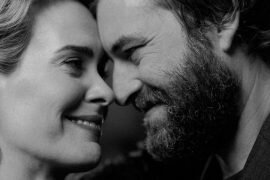Jonas Mekas, a Lithuanian born artist, filmmaker, writer, critic, film diarist, founder of Film Culture magazine and co-founder of Anthology Film Archives on the Lower East Side of Manhattan, died last month at the age of 96. He filmed roughly 50 films of various lengths on his 16mm Bolex camera. His columns in Village Voice and interviews he conducted featured just about everyone important in the cultural scene of 60s and 70s New York, to name a few: Kenneth Anger, Tony Conrad, the Maysles Brothers, Susan Sontag, John Cassavetes. He claimed he was never a film critic, more of a passionate, enthusiastic viewer of work he admired, and had to write about.
Film Culture magazine was an American answer to the French Cahiers du Cinema, but also very much rooted in European avant-garde based on American soil, at the rise of the cbunter-culture and beatnik movement and much less fortunate events as Vietnam War and police brutality. His debut film Guns of the Trees, much influenced by John Cassavetes film Shadows from 1958, tells a story of four fictional characters (one of them is Adolfas Mekas, the other one Ben Carruthers, who also appeared in Shadows), trying to understand why one of their friends committed suicide. The title comes from a poem of Stuart Perkoff, explaining the overall feeling at the beginning of 60s America, saying the whole world was against young people and even trees in the parks seemed like guns pointing to their existence. Thoughts of having feeling displaced and being misunderstood is very close to Mekas, as his own fight with the feeling prevailed in almost all his home films and film diaries. They look like mosaics, pieces of emotions filmed on 16mm, his work being both bitter and sweet and lyrical, at times witty and playful. The party scene for John Lennon’s birthday in the short film Happy Birthday to John (filmed in 1972, released in 1997) has both a happy and sad feel to it, foreseeing a bloody end of one’s life just a few years after. The above mentioned debut film is considered groundbreaking manifesto of American New Wave cinema.

And yet, Jonas was infected by cinema before coming to America. His early life in Lithuania played a great role in his own filmmaking. Together with his brother he was detained in a labor camp in Germany and then escaped to end up in a displaced persons camp for almost four years. While there, the US army showed American films, mostly Westerns and he noted The Treasure of Sierra Madre to be one of the first huge impacts, followed by the Fred Zimmermann film The Search about displaced persons, a topic which resonated with him. Once the UN refugee organization sent him and his brother to the US, they eventually settled in New York City, in the neighborhood Williamsburg, Brooklyn. It was the end of 1949, Jonas was 27 years old, then and there he decided he will stay 27 and never grow old. Soon after arriving in America, he bought his 16mm camera Bolex and began documenting his life and people around him, making one of his first film diaries, Williamsburg, Brooklyn.
From 1950 he continued to keep film diaries, Walden from 1969, almost three hours long, being among his longest. The material for Walden was shot from 1965 – 1969. The images of New York, situations and events with friends where shot sometimes in 10 frames, sometimes 10 minutes, in one continuous shot. His storytelling was unconventional but also very traditional, where style was seen at work by directors such as Joseph Losey or Alain Resnais. Capturing magical, naive and simple moments of life in complicated way by employing the camera in moving, prosaic, sacred way, where we’re invited inside, participating, not just watching. Lost Lost Lost from 1976 is a three hour long footage after footage of his move from Europe to America. The life story is accompanied with eclectic soundtrack that varies from jazz, Billy Holiday to Lithuanian folk music. He was a cronical of a very vibrant period of the history of New York, meeting Warhol and turning him to making movies and helping him make his eight hours long Empire, slow meditation view over Emire State Building. He was admired by so called American Royal family, when Lee Radziwill hired him to teach Jackie Kennedy’s children photography and filmmaking, having him spend summer in Montauk on Warhol estate. Amazing footage justified his description of that being summer celebrating life and friendship.

Jonas Mekas celebrated life trough his work, however hard it may have been at times. He was searching for a home, both in America and Lithuania. Reminiscences of a Journey to Lithuania from 1972 is a bitter sweet diary of this search, where the first part of the film reflects his life as an immigrant and the second depicts his first trip back to where it all started. The last part is filmed in Vienna shortly afterwards. He finally meets with his family in his home village Semeniskiai. Evoking memories and making new ones. At one point in the film, he asks himself “So what does one do, when one comes home after 25 years?”. He then answered the question by quoting himself by saying that place means nothing to him, he is at home anywhere. And we are at home when we watch his movies.




